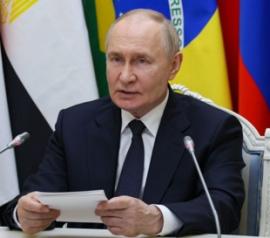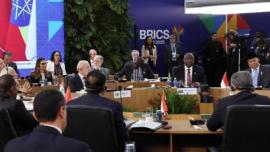Trump's Escalating Tariff Threats & Global Market Uncertainty

The global trade landscape is undergoing significant shifts as the United States, under President Donald Trump, intensifies its pressure on trading partners to finalize new tariff deals. The administration has set an August 1 deadline for potential tariff hikes for countries that have not yet reached new agreements, a move intended to spur negotiations and rebalance trade relationships. This initiative commenced with dozens of warning letters sent to various nations, signaling that higher tariffs could take effect soon.
White House National Economic Council director Kevin Hassett and Treasury Secretary Scott Bessent confirmed that numerous letters would be dispatched, emphasizing the administration's goal to transform smaller trading partners into much larger ones. President Trump himself stated that as many as 15 letters would begin circulating on Monday, July 7, with more to follow on Tuesday and Wednesday. While some deals have already been made, the focus remains on the 18 important trading relationships that collectively account for 95% of the U.S. trade deficit. Treasury Secretary Bessent clarified that the August 1 date is not a new deadline but rather a firm implementation date, providing an impetus for countries to accelerate their negotiations.
A notable aspect of the new tariff policy targets the BRICS alliance of emerging economies. President Trump announced an additional 10% tariff on any country aligning itself with the "Anti-American policies of BRICS." This stern warning came as the BRICS group, initially comprising Brazil, Russia, India, China, and South Africa, and now including Iran, Egypt, Ethiopia, the United Arab Emirates, Saudi Arabia, and Indonesia, held a summit in Brazil. The BRICS leaders responded with a thinly veiled criticism of Trump's trade approach, issuing a joint statement that cautioned against "unjustified unilateral protectionist measures, including the indiscriminate increase of reciprocal tariffs," and expressed "serious concerns about the rise of unilateral tariff and non-tariff measures which distort trade and are inconsistent with WTO rules." Experts like Stephen Olson, former U.S. trade negotiator, suggested that Trump's reference to "anti-American policies" likely pertains to the BRICS members' ambition to foster a world order less reliant on U.S. financial and global governance leadership. The bloc actively seeks to improve economic, political, and social cooperation among its members, increase the influence of Global South countries in international governance, challenge Western-dominated economic institutions, and ultimately supplant the U.S. dollar's role in the global economy.
The current tariff push follows a period of significant volatility. On April 2, Trump announced steep tariffs that threatened to overhaul the global economy. A week later, after financial markets reacted with panic, the administration suspended most of these higher taxes for 90 days, effectively pushing the initial July 9 expiration to August 1 for many partners, though a 10% baseline tariff remained. Chinese goods, for instance, are currently subject to 30% across-the-board tariffs. The White House has highlighted recent trade agreements with countries like China, the U.K., and Vietnam, signaling progress. The deal with Vietnam, announced last week, stipulates 20% tariffs on Vietnamese imports to the U.S. (down from a proposed 46%) and a 40% tariff on "transshipping," with Vietnam agreeing to open its market to U.S. products at zero tariff. Meanwhile, trade talks with India have intensified, although a final agreement on sensitive issues like agricultural and dairy products has not yet been reached. Canada, a significant trading partner, is an exception; it will not receive these warning letters, with U.S. Ambassador Pete Hoekstra indicating that a trade deal with Canada is imminent, though some tariffs may still apply even with an agreement.
The looming tariff deadlines have generated mixed reactions and uncertainty in global markets. While Wall Street futures and Asian indices have seen declines in response to the escalating trade tensions, market analysts, such as Stephen Innes of SPI Asset Management, anticipate a more "softened tariff regime," with an expected effective rate of 10% to 14% in the U.S., which he considers "quite manageable." Innes also suggests that any inflationary impact from these tariffs would likely be a "one-off" rather than a sustained spike. There is ongoing debate about whether corporations or exporters will primarily absorb the cost of these tariffs. The overall market sentiment, particularly in India, has shown resilience despite global jitters. Stephen Innes points to a "taco trade" theory, where market participants believe Trump often backs down from aggressive tariff stances, leading to a general acceptance of a softer tariff regime. Furthermore, Innes favors gold as a top-performing asset amidst this uncertainty, citing strong central bank buying driven by de-dollarization efforts and robust Asian demand, especially from China and India, which is offsetting softening retail interest in North America. The Federal Reserve's potential dovish stance, influenced by how tariffs ultimately land, could further fuel market rallies. Overall, the global economy continues to navigate the complexities of these evolving trade policies, with a mix of uncertainty, strategic negotiations, and adaptive market responses.












